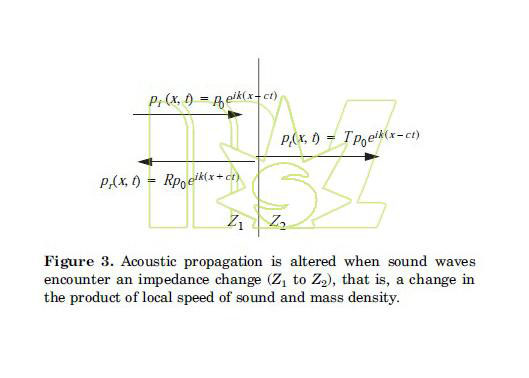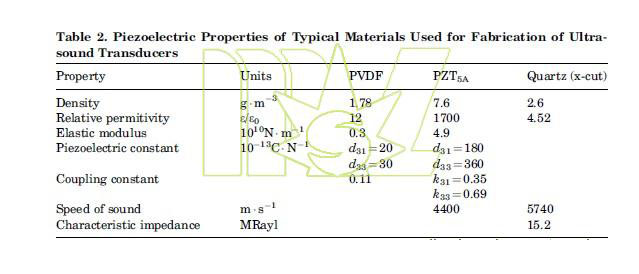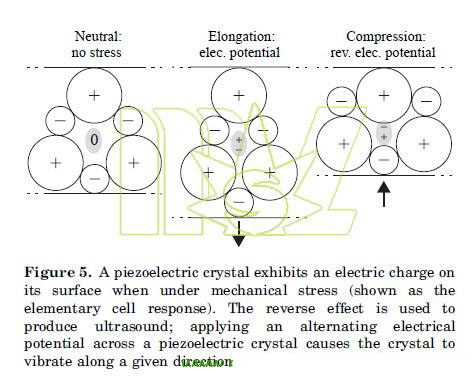Ultrasound transducers are made from piezoelectric materials, as described above. Typically, a layer of material is used to create a surface area for creation and transmission or reception of ultrasonic waves. The thickness of this layer is a function of the material properties and the desired acoustic frequency. As seen in Fig. 3, acoustic waves are reflected by impedance changes. An oscillating layer of piezoelectric material produces mechanical waves that propagate in the oscillation direction. These waves can be either compressional or shear waves. Here, the focus will be on compressional waves.

Constructive interference of waves launched or reflected from the front surface and from the back surface of the crystal yield maximum pressure generation. High frequency transducers are made from very thin crystals due to their short wavelength and low frequency transducers are made from larger thickness crystals. For example, a 4MHz transducer can be made from a 0.55mm thick crystal. Table 2 lists the speed of sound in PZT5A as 4400m_ s_1. The wavelength in PZT5A at 4MHz is 1.1mm. Transducer crystals are typically machined to a thickness of l/2, that is, 0.55mm for 4MHz.

The rationale for this thickness is in the constructive interference of acoustic waves inside of the crystal. Figure 5 shows the bottom of the crystal moving up and down. Mechanical waves will launch from this surface and travel to either side of it. Assume that the bottom side of the surface is facing air and that there is no sound transmitted into it. The sound wave traveling toward the top surface will be transmitted beyond that surface into the desired medium (e.g., tissue). Reflected waves will travel downward and interfere with upward traveling waves. Moreover, reflected waves experience a phase shift of 1808. This is the reason that l/2 is the required thickness and not l.





 Price is 8-20% Lower Than Other
Price is 8-20% Lower Than Other






